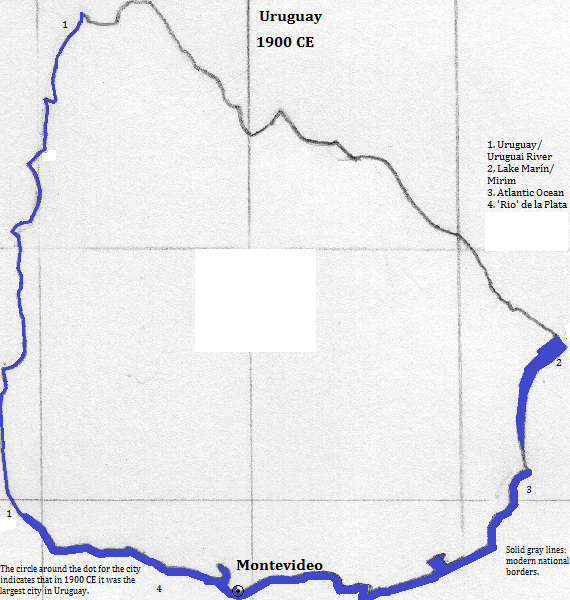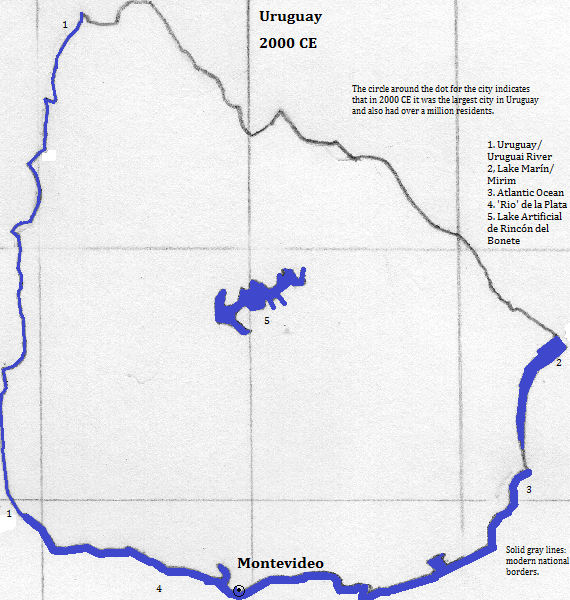
| To Duval Family Home Page | South America |
| To Chris Home Page | Hispano-America |
| To Earth (Geography Home Page) | Uruguay |
Montevideo, the national capital of Uruguay, sits along the northern shore of the Río de la Plata
As of the spring of 2016, the tallest building is the Torre (tower) Antel (517 feet, 2002), whose bottom floor houses a telecommunications museum. The Palacio Salvo (328 feet to the tip, 275 feet by architectural height) was the tallest building in South America when it was finished in 1928. The Palacio Municipal (256 feet, 1941) includes works of art: a mural of tropical trees, and reproductions of Michelangelo's David (in black stone) and of the Winged Victory statue.
UNESCO honors the city as a World Heritage 'Site,' along with Buenos Aires, for its contribution to tango dancing.
Tourists enjoy the ramblas (waterfront boulevards), the Andes Mueseum 1972 (Museo Andes), the Plaza Independencia and the Palacio Salvo.
The metropolitan area is served by the Carrasco/ General Cesário L. Berisso International Airport.
| Year | Population |
| 1900 CE | 268,000 |
| 2012 CE | 1,936,000 |
Plaza Independencia and the Palacio Salvo, Montevideo, Uruguay

